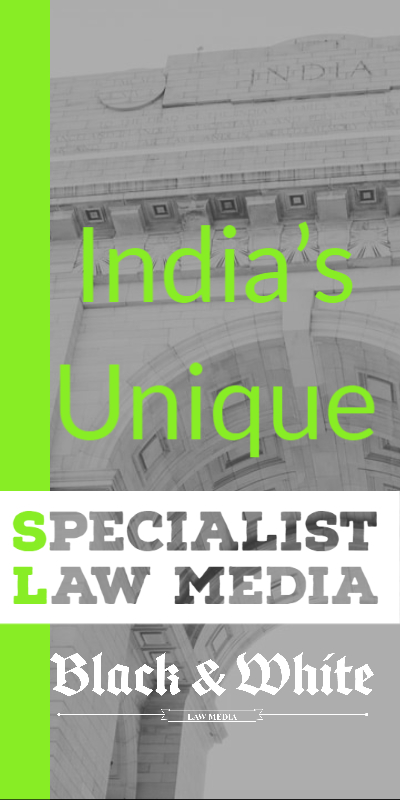अश्लील और कामुक: कौन तय करता है Obscene And Lascivious: Who Decides
Are you familiar with the legal definitions of 'obscene' when it comes to materials?
Defining the ‘Measure of Obscenity’
Obscenity has been an ongoing battle and a contentious subject for many years, with both sides arguing their respective points on the subject. With these tensions in mind, changes to obscenity laws have had to be made to meet the changing requirements of society. It is thus imperative that we understand how the law governs obscenity and what might have led to evolving changes with regards to it. In this thought evoking article, we provide fact-based insight into legal provisions on nudity and obscenity, and key case references with their keynote judicial outcomes. It will be an eyeopener which will let you know the key defining boundaries of terming a material obscene.
Tackling Obscenity: A Global Perspective
From Marilyn Monroe's iconic white dress look to Kim Kardashian's notorious 'break the internet' photoshoot, celebrities often make a huge impact on our culture and create waves of debates about censorship and obscenity. For decades, some magazine covers have pushed boundaries when it comes to what is socially acceptable and sparked important conversations about morality in society. The blurred lines between obscurity, public outrage, and representation give us cautious insight into societal norms.
The most recent such incident happened when US President Donald Trump's wife Melania made an appearance on her son Barron's birthday party at Mar-A-Lago on March 18, 2017, wearing a light pink dress that exposed almost all of her back and a plunging neckline with a nude tone to it. This got the attention of many, including UK tabloid Daily Mail who published the image online for their readership to see (and share) two days later. While some simply expressed their disapproval of the dress, others took it a step further by publishing Melania's nude images on the website with the headline "Melania Trump flashes her backside as she parties at Mar-A-Lago on son Barron's birthday". The Daily Mail later apologized for publishing Melania's pictures.
Tackling Obscenity: Indian Perspective
India has long been a conservative society; its culture is steeped in values that do not condone obscenity or profanity. This deep-rooted morality holds true even in the digital age, where people are constantly exposed to the plethora of content available on the internet. In recent times, this rigid morality has caused an uproar among many people, leading to protests and campaigns to completely ban any form of obscenity from Indian society.
These protests have resulted in a great deal of discussion and debate among people across different social circles and left everyone with stories about what is really happening in India concerning obscenity.
The Indian Judiciary Response to Social Evolution
Indian law on obscenity has evolved significantly over the years as the social landscape of the country has changed. With advancements in technology and changing attitudes in relation to expression of artistic works, the boundaries of what constitutes an obscene work have changed, too. True to this evolution, in 2012 the Indian government issued guidelines for freedom of expression on internet platforms and applications. These guidelines are not legally binding but provide a broad framework for considering the legality of such works and policies that aim to regulate Internet content in the country. The 2008 decision was based on independent legal opinions from relevant jurisdictions and was followed by similar judgements in 2014 and 2016. The case is widely cited both domestically and internationally as an example of how India has sought to draw a line between acceptable artistic expression and material that is considered to is important to critically evaluate how obscenity is viewed under Indian law
Obscene material has always been subject to stringent laws in India, and the judiciary has enforced them vigorously. Some judgements in this regard have had far-reaching implications, either protecting the public from obscene content or upholding the freedom of artistic expression. The Indian Supreme Court has handed down several judgements and rulings with regards to obscene material in the country. Considering religious, cultural, social, and legal factors, the Supreme Court has made important rulings that define & determine obscenity in India. In this article, we will look at some of these rulings and their implications for obscenity laws in the country.
Setting the Standard for Content Quality
Recently, famous Indian film actor Ranveer Singh has been in the news for quite some time now. He was recently during controversy after photos of him posing nudely for a magazine spread went viral. As a result, multiple FIRs were lodged against him by various authorities for his alleged "obscene conduct or content". This incident reveals how even celebrities are not safe from prosecution if they fail to abide by ethical and legal standards when creating content. Now, as people become more conscious about the power of digital media and its implications on society, it is highly likely that similar incidents will become more frequent in future.
He was charged for obscene conduct or obscene content in violation of IPC sections 292 (selling of obscene books, etc.), 293 (sale of obscene products to minors), and 509 (statement, gesture, or act intended to offend the modesty of a lady), among other provisions.
In 2020, famous Indian model and actor, Milind Soman also faced similar charges related for obscenity.
INDIAN PENAL CODE & Notable Case References
The Indian Penal Code (IPC) defines various offences related to obscenity but does not itself directly define the term. Sections 292 and 293 of IPC address obscene publications, paintings, and acts, respectively. Despite this focus on censoring obscenity-related activities, we can see that the IPC fails to clearly define what these activities are. This creates a problem when it comes to enforcement, as ambiguities can be used to either criminalize or excuse any action or material which may be deemed offensive or obscene by certain individuals or groups of people. The lack of a clear definition for “obscenity” in the IPC leads to confusion about where the line is drawn between free expression and obscenity in India.
- In the year 1965 Ranjit D. Udeshi case, it was emphasized that the Courts have the responsibility of deciding how to differentiate between creative and obscene material. The court in the above case observed that the concept of obscenity will evolve as the time progresses. The Court held as follows:
"It may, however, be said at once that treating sex and nudity in art and literature cannot be regarded as evidence of obscenity without something more. The test of obscenity must square with the freedom of speech and expression guaranteed under our Constitution.
- In 1969, in Chandrakant Kalyandas Kakodar, the court observed, "The standards of contemporary society in India are rapidly changing," Likewise, in Samaresh Bose v. Amal Mitra (1985) and Khushboo V. Kanniammal
the courts have increasingly been emphasizing the importance of contemporary social values and how they should be reflected in their judgements. By paying attention to the general attitude of the ordinary reader, the judges can make decisions which better reflect current societal values. This is essential for fostering a sense of justice and fairness in modern societies. Moreover, this new perspective has extended to other legal domains where laws must align with and reflect changing public opinion.
COMMUNITY STANDARD TEST
To determine the obscenity, a community standard test must be applied.
Section 292(1) states unequivocally that an image or article is deemed obscene:
- if it is lascivious.
- it appeals to the prurient interest, and
- it tends to deprave and corrupt persons who are likely to read, see or hear the matter, alleged to be obscene.
The Test Benchmarks
- When it is established that the material in question is obscene, there may be doubt as to whether it can be exempt from Section under any of the specified exceptions.
- Accordingly, any disputes regarding the acceptability of sex-related material can only be determined by looking at whether it is exempt from Section.
- It can be judged as inappropriate if something is intended to "arouse sexual desire" by the standards of the common person and based on today's communal standards. Nevertheless, obscenity is evaluated under careful consideration.
Obscenity is not always just what the image looks like; the message and context of a certain image or content can be just as revealing. By carefully considering the message, context and circumstances surrounding a particular piece of content, we can gain a better understanding to determining whether it should be classified as obscene. When making these decisions, it’s important to consider both the audience, and any special context that could make an otherwise inoffensive phrase, image, or statement more explicit or offensive.
The Case of Bandit Queen Movie refereing to Bobby Art International & Ors. v. Om Pal Singh Hoon trial
When addressing the issue of obscenity in the movie Bandit Queen, the court made the observation that watching the movie "Bandit Queen" is an eye-opening experience. It conveys a powerful message - that women should not be treated with violence and cruelty, no matter how helpless they are. The story of Bandit Queen being forced to become a dacoit through by torturing and abusing her is an example of the increase in social danger caused by such treatment. It serves as an alarming reminder of how quickly a woman can be conditioned to take desperate measures when faced with harsh and oppressive environments. Through this story, we can learn to appreciate the strength and courage of women, who often face much harsher conditions than men in our society.
The Court expressed the following view: - “Bandit Queen” tells a powerful human story and to that story the scene of Phoolan Devi’s enforced naked parade is central. The movie, "Bandit Queen", not only tells the story of Phoolan Devi’s rise to fame and her vendetta against the society but also explains why she became what she did. From Phoolan’s tumultuous childhood to the discrimination, she faced in caste and gender, the movie throws light on various causes of her rage and emotional breakdown. By understanding the factors driving her long road of revenge and bloodshed, we can identify how such sadistic behaviors can be avoided in future generations.
Referring to all the above-discussed cases, the court in Aveek Sarkar & Anr. v. State of West Bengal & Ors.,the court's decision emphasized the importance of considering the context in which images appear and the message they convey when evaluating the copyright status of a work. In order for something to be considered a copyright infringement, it must be determined that it sends a message similar to another copyrighted work. Thus, when determining whether or not an image may constitute an infringement, it is essential to consider both the context in which it was presented and its intended message sent out to its viewers.
Footnotes
Black & White Law Media keeps advising you and informing you with insightful messages and campaigns to build informed, enabled and law-abiding citizen. Our celebrity and people leader network support our cause to serve the nation and constitution. We are happy to see our fellow citizen safe and enabled, also we are happy to help our citizen in legal matters anytime, anyplace.
If you are looking for the best Criminal Defense, Pursuance of the Cause of Social Justice, Or want to take a legal opinion on any matter, it is important to reach out to us. We provide the best legal representation for all kinds of cases, with research based adaptive advisory.





